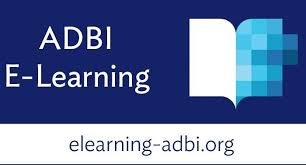Welcome! You are here because you want to know more about the Statement of Purpose (SOP) and why it is essential for your application. Many applicants get confused about this document because it is deeply personal, yet must remain professional and structured. Think of it as your story told in a way that convinces the scholarship committee why you are the best fit. Today, I’ll guide you step by step—like a teacher walking you through—so by the end, you’ll know exactly how to write a winning personal statement or SOP.
What Is a Personal Statement / SOP?
A Personal Statement (or Statement of Purpose) is a written essay where you explain:
-
Who you are
-
Your academic and professional background
-
Your motivations for applying
-
Why you chose a particular program or scholarship
-
Your future career goals
In simple terms, it’s where you connect your past, present, and future into one powerful story.
Structure of a Strong Personal Statement
Here’s the accepted structure you should follow:
1. Introduction (Hook + Motivation)
-
Begin with something captivating—a personal story, an inspiring moment, or a challenge that shaped your goals.
-
Clearly state your motivation for applying.
💡 Example:
“Growing up in a rural community where access to clean water was limited, I witnessed firsthand how a lack of resources hinders development. This experience inspired me to pursue Environmental Engineering to contribute to sustainable solutions for global challenges.”
2. Academic Background & Achievements
-
Highlight your relevant studies, grades, research, or projects.
-
Show how your academic journey prepared you for this scholarship/program.
💡 Tip: Don’t just list courses. Connect them to the skills you gained.
3. Professional / Extracurricular Experience
-
Share work experience, internships, volunteering, or leadership roles.
-
Emphasize transferable skills (teamwork, research, leadership, problem-solving).
💡 Example:
“During my internship at XYZ Labs, I worked on renewable energy projects that deepened my understanding of sustainable technology and strengthened my research abilities.”
4. Why This Scholarship / Program?
-
Show that you’ve researched the institution and program.
-
Mention specific professors, facilities, or unique aspects of the scholarship.
-
Convince them you’re not applying randomly—you belong there.
5. Future Goals
-
State clear short-term and long-term goals.
-
Link them to the scholarship/program.
💡 Example:
“With this scholarship, I will acquire advanced knowledge in data science, which I aim to apply in developing AI-driven solutions for healthcare in developing countries.”
6. Conclusion (Reinforce + Call to Action)
-
End confidently and positively.
-
Re-emphasize how you are a perfect match.
💡 Example:
“This scholarship is more than financial support—it is a platform that will enable me to transform my vision into impactful contributions. I am eager to bring my passion, skills, and dedication to this program.”
Common Mistakes Applicants Make
-
Being Too Generic
-
Avoid phrases like “I want to study abroad to gain knowledge.” Instead, be specific.
-
-
Copying Templates
-
Scholarship committees spot clichés and copy-paste statements easily. Write in your authentic voice.
-
-
Overloading with Achievements
-
Don’t just brag. Link achievements to how they shaped your goals.
-
-
Poor Structure
-
Random stories with no flow confuse readers. Stick to the structure above.
-
-
Too Long / Too Short
-
Keep it between 500–1,000 words (or as required). Balance detail with clarity.
-
Download a sample of a good Statement of Purpose here
Quick Checklist for a Winning SOP
✅ Strong hook in the introduction
✅ Clear academic & professional journey
✅ Connection to the scholarship/program
✅ Realistic but ambitious future goals
✅ Authentic voice (not copy-paste)
✅ Proofread for grammar and clarity
Read Also: How to Write a Winning CV for Your Applications
For more scholarship and job tips, plus other opportunities, you can sign up for our newsletter to get our latest updates delivered right to your inbox






